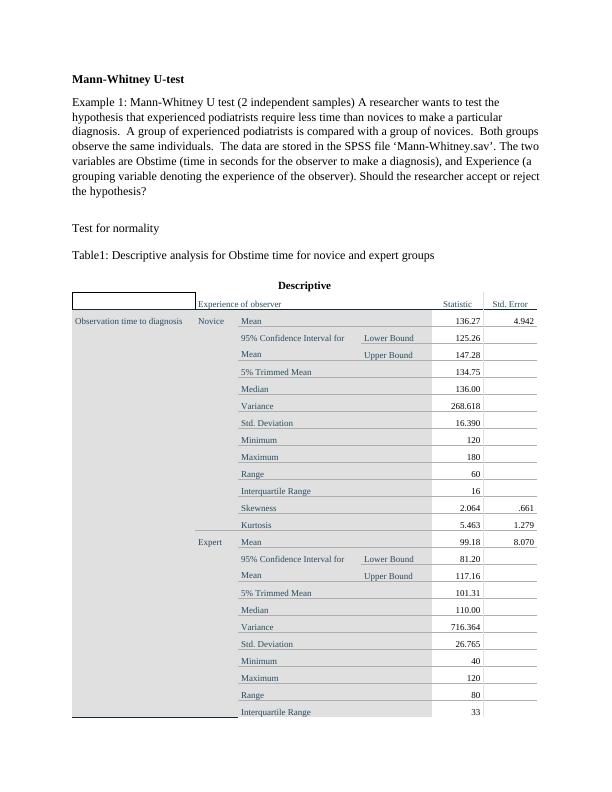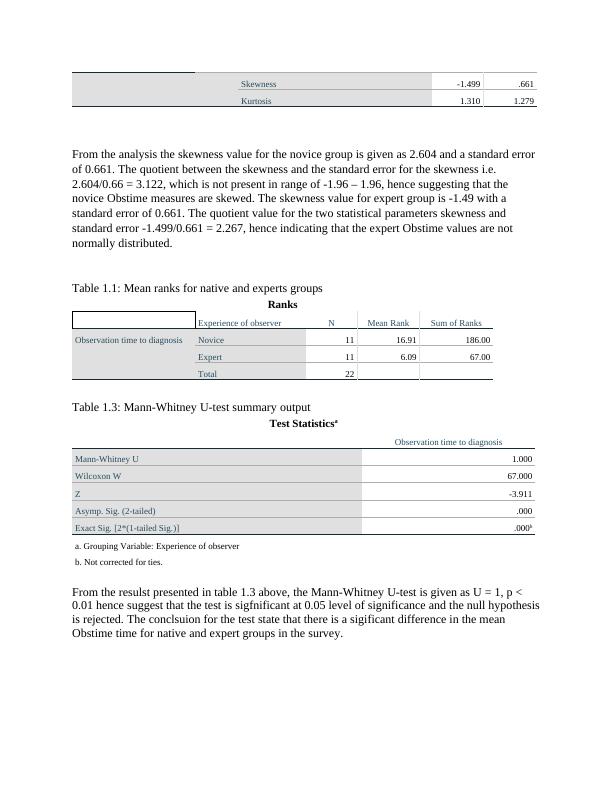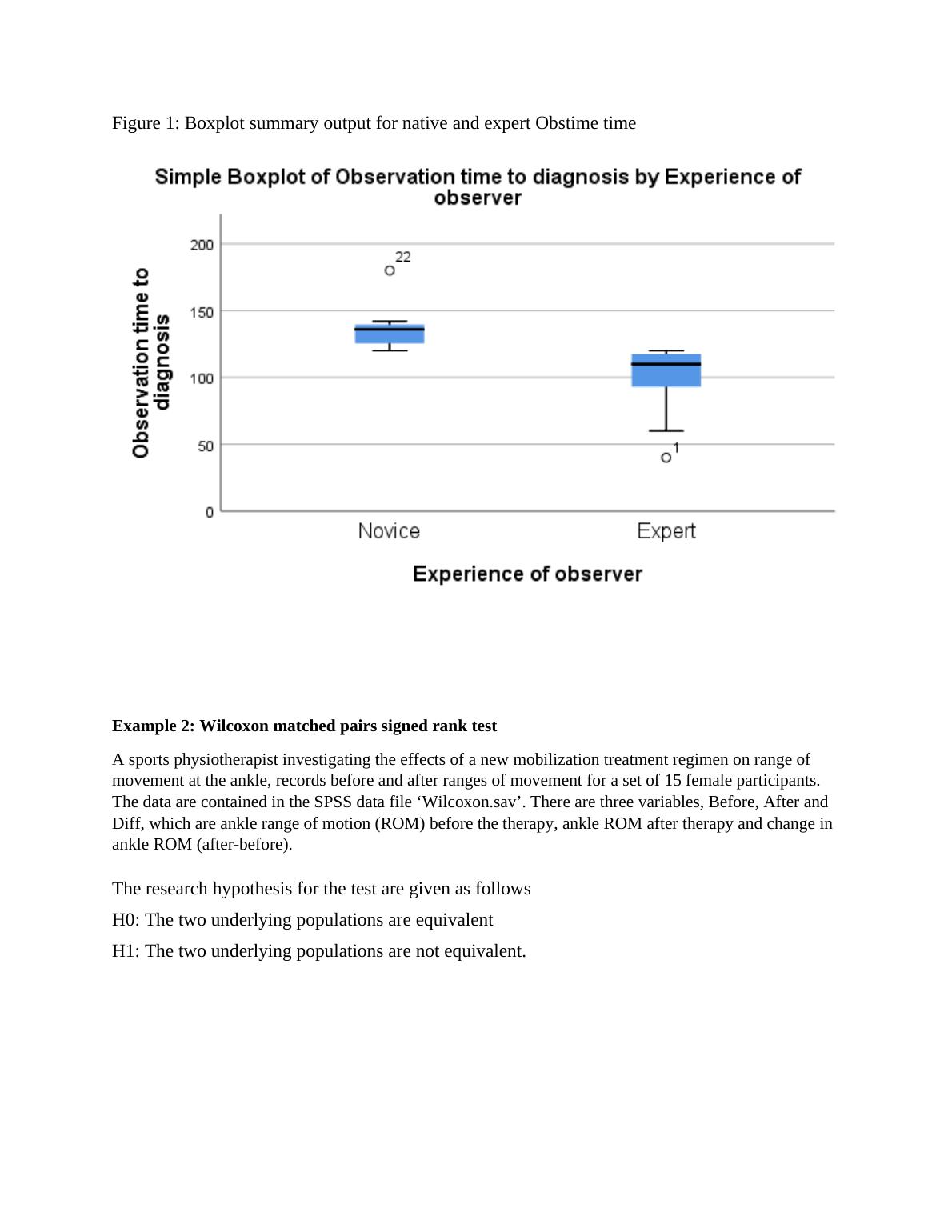Statistical Tests: Mann-Whitney U-test, Wilcoxon matched pairs signed rank test, Kruskal-Wallis test, Friedman test
Gain understanding of the Chi-square statistic and when to use this method of inferential analysis, learn how to run the analysis and interpret the output from the various forms of the Chi-square test available in SPSS.
9 Pages1403 Words166 Views
Added on 2022-11-01
About This Document
This document explains the Mann-Whitney U-test, Wilcoxon matched pairs signed rank test, Kruskal-Wallis test, and Friedman test with solved examples. The examples include testing the hypothesis that experienced podiatrists require less time than novices to make a particular diagnosis, investigating the effects of a new mobilization treatment regimen on range of movement at the ankle, comparing the change in sum of skinfolds for aerobics and control groups, and testing the reaction time for different treatments. The document provides tables, descriptive analysis, mean ranks, boxplot summary output, error plot summary output, and test statistics for each example.
Statistical Tests: Mann-Whitney U-test, Wilcoxon matched pairs signed rank test, Kruskal-Wallis test, Friedman test
Gain understanding of the Chi-square statistic and when to use this method of inferential analysis, learn how to run the analysis and interpret the output from the various forms of the Chi-square test available in SPSS.
Added on 2022-11-01
ShareRelated Documents
End of preview
Want to access all the pages? Upload your documents or become a member.
Statistics 2 - Understanding Parametric and Non-Parametric Tests
|11
|1311
|299



